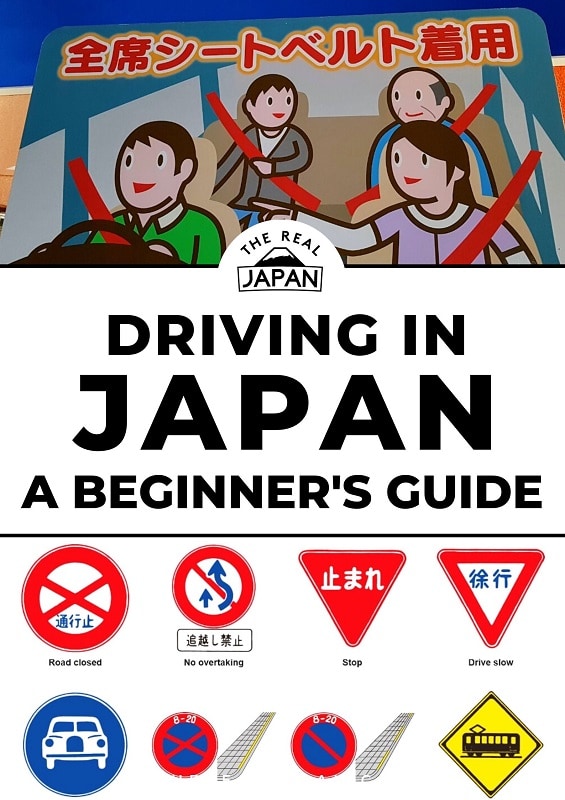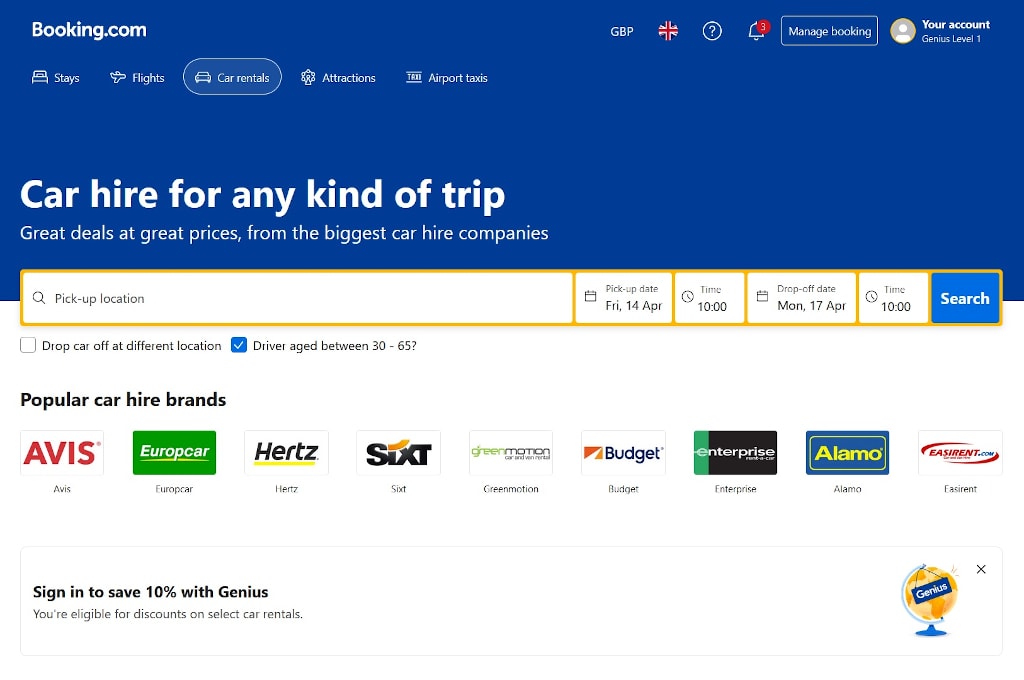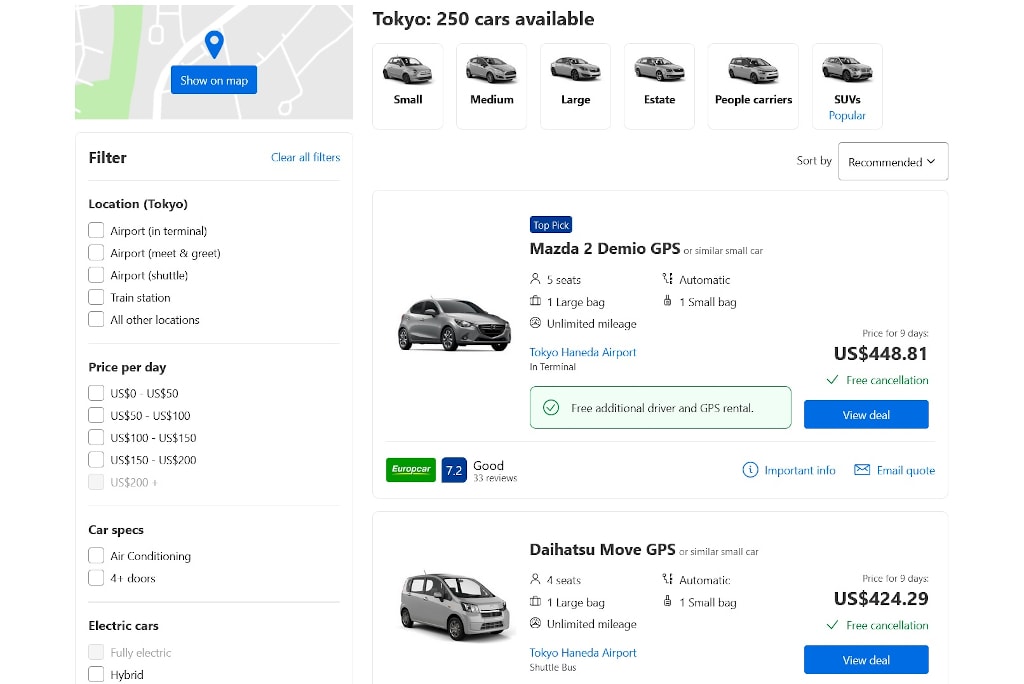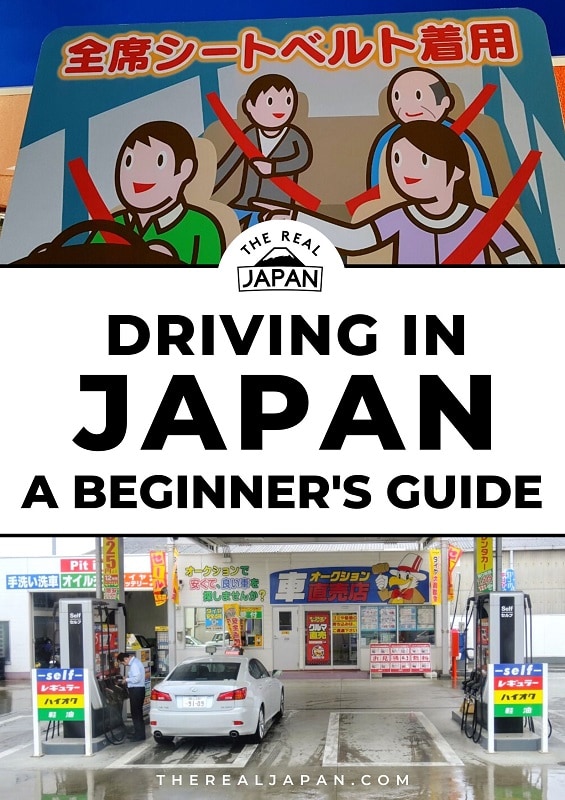Are you considering driving in Japan on your next trip?
Driving can be an enjoyable and efficient way to experience the country, but there are a few things you should consider first.
In this blog post, I'll discuss the pros and cons of driving in Japan, how to obtain an International Driving Permit, the process for obtaining insurance, car rental options, navigating with GPS and Google Maps, tips for using and paying for Japanese toll roads, and more.
I'll also highlight a few alternative methods of travelling around Japan, including to those off-the-beaten-path spots.
If you're new to driving in Japan, this post will provide you with all the information you need to decide if driving in Japan is right for you or not. Fasten your seat belt!
Download this Beginner's Guide to Driving in Japan:
Driving in Japan - A Beginner's Guide
by Rob Dyer
When it comes to driving in Japan, neither my wife nor I are experts. That is to say neither my wife or I drive - at all!
So, for this introduction to driving in Japan, I first turned to you, my community, to get your firsthand experiences of some of the issues you ran into and what you needed help with. I then researched the solutions. Consulted with professionals who drive in Japan. And here’s what I came up with. I hope you find it useful.
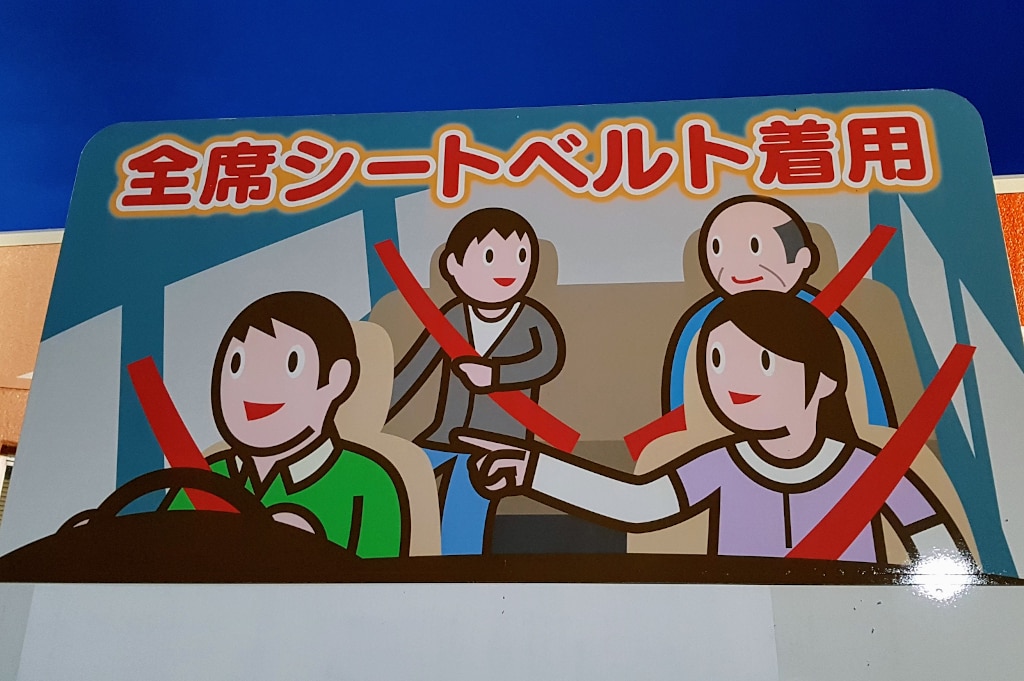
Public information signs at service areas remind car users that all occupants must wear seat belts
I'm often asked whether or not it is a good idea for first-time visitors to Japan to try driving in the country. And most of the time my response is that it isn't a great idea.
When it comes to driving in Japan, I broadly agree with a Scottish-born friend now living in Joetsu, a small city in Niigata Prefecture, he says: “Personally I wouldn’t recommend driving in Japan until you’ve been a passenger for a while and have some experience of the differences in driving culture, signs and weird traffic light systems”.
Advice on driving in Japan from the US Embassy
This extract from the U.S. Embassy & Consulates in Japan website about driving in Japan isn't exactly selling the idea either…
“Driving in Japan can be quite complicated and expensive. Those who cannot read the language will have trouble understanding road signs. Highway tolls are assessed at about US $1 per mile.
City traffic is often very congested. A 20-mile trip in the Tokyo area may take two hours. There is virtually no roadside parking. In mountainous areas, roads are often closed during the winter, and cars should be equipped with tire chains.
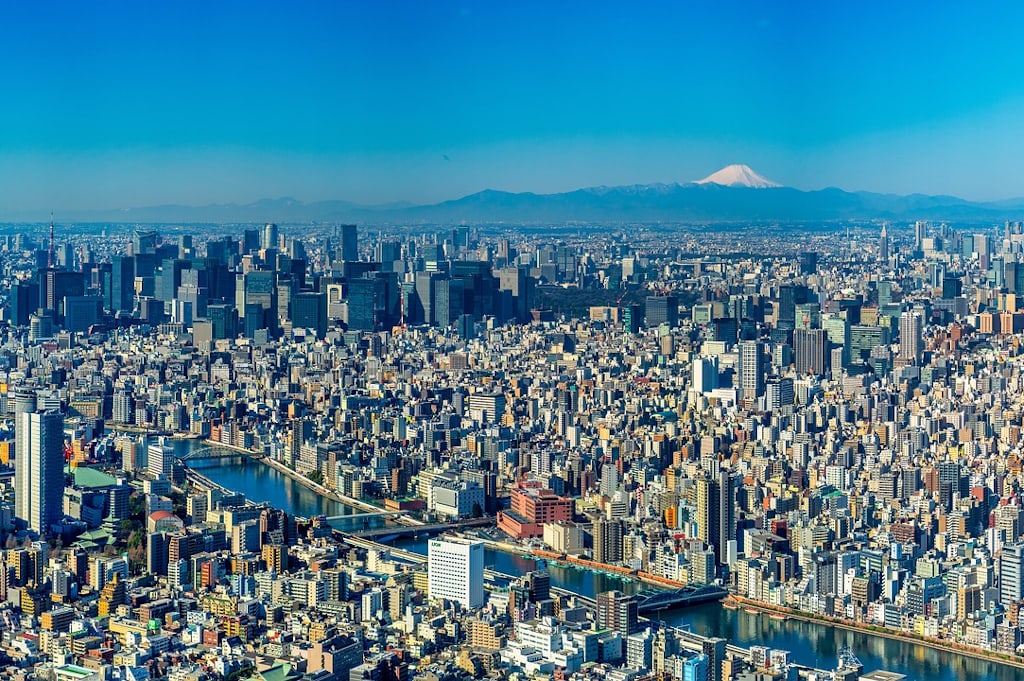
Driving in Japan's capital, Tokyo can be daunting for some, thrilling for others
Roads in Japan are much narrower than those in the United States. Vehicular traffic moves on the left. Turns at red lights are forbidden unless specifically authorized.”
But don't let that put you off the idea of driving in Japan.
I’m not here to tell you what you should, or should not do. That’s a decision only you can make.
My aim with this beginner's guide is to provide you with some essential things to be aware of, and give you information and resources on where you can find out more detail if you need to. Hopefully, you'll then be in a better position to make your own decision.
Driving in Japan when you don't speak (or read) Japanese
Now might be a good point to briefly touch on an important consideration - namely driving in a country in which you may not speak or read the language, or only have limited ability.
Driving in Japan can feel like a bit of a challenge if you don't speak or read Japanese. It is important to familiarise yourself with the country's traffic laws and regulations. Additionally, it is good to have a basic understanding of the road signs and markings.
Before you arrive, it is also a good idea to decide how you plan to navigate. You could purchase a good map or rely on an in-car GPS navigation system, or consider using Google Maps on your phone so you can easily find your way around. Although it can be daunting at first, with a bit of preparation and research, it is entirely possible to navigate the roads of Japan safely and confidently.
If you'd like to do a bit of prep in advance, I have written a general introductory guide to travelling in Japan when you don't speak the language. It's called How to travel in Japan Without Speaking Japanese. It's available in eBook and audiobook editions. There's also a discounted bundle that includes both the eBook and audiobook editions.
Driving on the left hand side of the road
Japan is a left-hand traffic country, meaning vehicles drive on the left side of the road.
If you come from a country that also drives on the left, including several African countries, Australia, Hong Kong, India, Ireland, Malaysia, New Zealand, Singapore and the UK, you'll have an advantage over those coming from countries where driving is on the right-hand side, such as the USA, Canada,
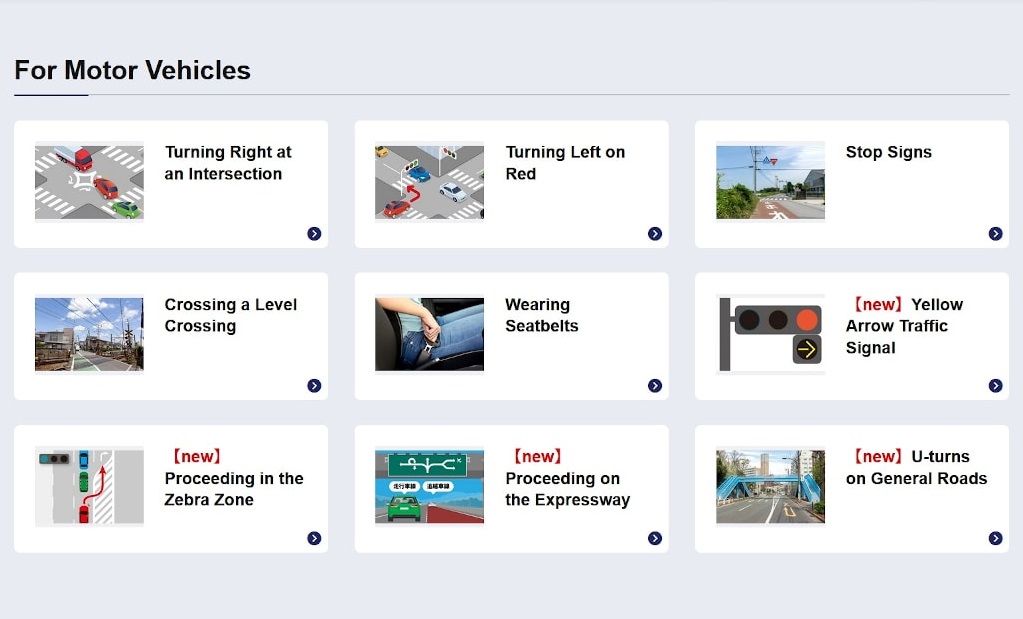
The Japan Automobile Federation website is full of useful information on driving in Japan | Photo: JAF
If you're a seasoned driver, it shouldn't take you too long to adjust. But if you are from a right hand drive country, and used to left hand drive where the steering wheel is usually on the left side of the vehicle, switching to the steering wheel being on the right side of the vehicle can feel uncomfortable the first time you try it.
You might also find that dashboard layouts and access to controls such as audio volume and climate controls also feel counterintuitive at first.
Many of the driving safety tips you'll see online from the Japanese authorities and organisations like the Japan Automobile Federation have an emphasis on the dangers that can arise from turning at junctions etc. where driving on the side of the road opposite to the one you're used to might be problematic.
VIDEO: Stick To The Rules - Enjoy Japan
Where is best for driving in Japan?
It's probably less stressful and easier if you generally steer clear of major city centres and remote rural areas.
City centres are likely to be the most stressful (narrow roads, lots of traffic, multilevel expressways, etc.), whereas remote areas are more likely to be frustrating in that there are fewer signs in English, roads are often single lane, and where taking a (potentially time-consuming) wrong turn is easily made.
That still leaves you with plenty of tarmac to cover though, and much of the country is generally well crisscrossed with roads and highways. Two of Japan's islands in particular are actually well-suited to driving: Hokkaido and Okinawa. Away from the cities, both are rural, have only a few major roads and comparably little traffic.
The Japan Automobile Federation
When researching the topic of driving in Japan, the Japan Automobile Federation website is a good place to start.
It includes plenty of information on the general rules and regulations, along with examples of some of the most common road signs and traffic lights, as well as a free, downloadable guide to driving in Japan.
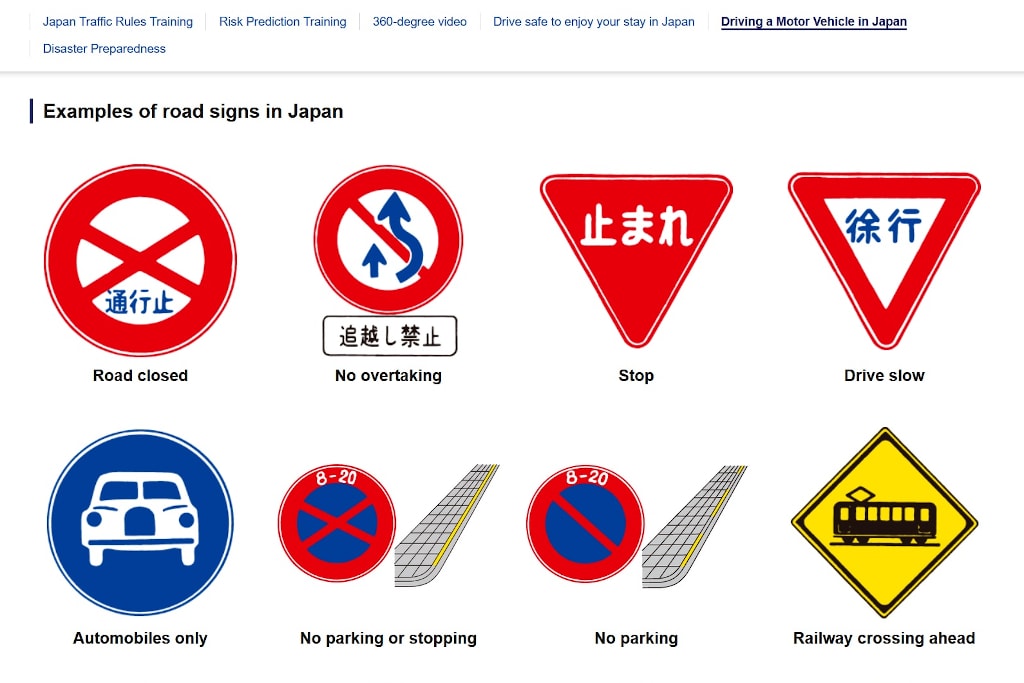
The Japan Automobile Federation website has plenty of useful information, resources and videos - all for free | Photo: JAF
Obtaining an International Driving Permit
All foreign visitors to Japan require an International Driving Permit (IDP), to drive in the country. These permits are not issued in Japan and must be obtained in your home country before coming to Japan. IDPs are generally issued through your country’s national automobile association for a small fee.
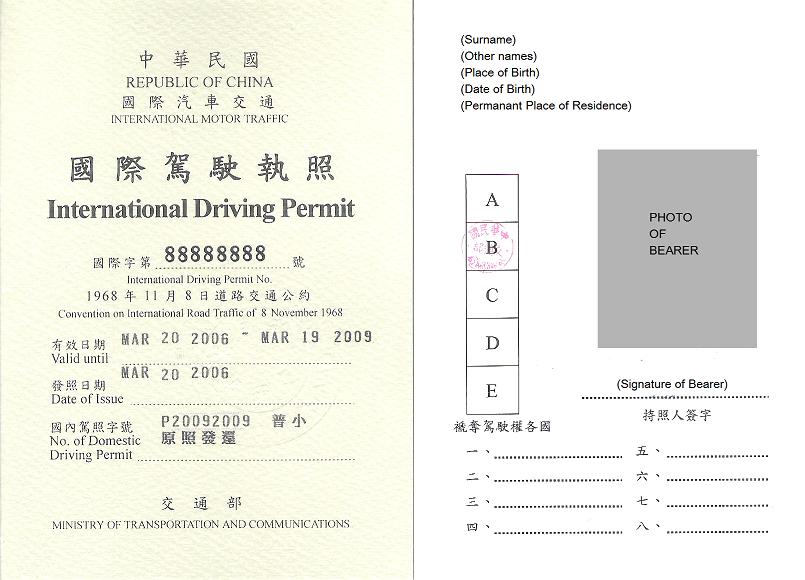
Example International Driving Permit issued by the Republic of China
Japan recognises International Driving Permits based on the 1949 Geneva Road Convention. A list of countries from which nationals with a valid driver’s licence are able to drive in Japan with a valid International Driving Permit is available on the JAF website here: https://english.jaf.or.jp/driving-in-japan/drive-in-japan/geneva.
Unfortunately, Switzerland, France, Germany, Belgium, Monaco and Taiwan are not on this list. Drivers from any of these countries will therefore need a translation of their national driver's licence in order to drive in Japan. The company Driving-Japan offers such translations, which are officially issued by the JAF. You can conveniently order it online and it will be sent to your hotel address in Japan or even to your home address. They also offer the handy service of printing it out within a week at a 7-Eleven store in Japan.
Vehicle insurance is mandatory
Anyone looking to drive in the country must also purchase mandatory insurance coverage such as motor vehicle liability insurance and compensation insurance for bodily injury. Additionally, they must also purchase insurance coverage for damage to the car and third party liability.
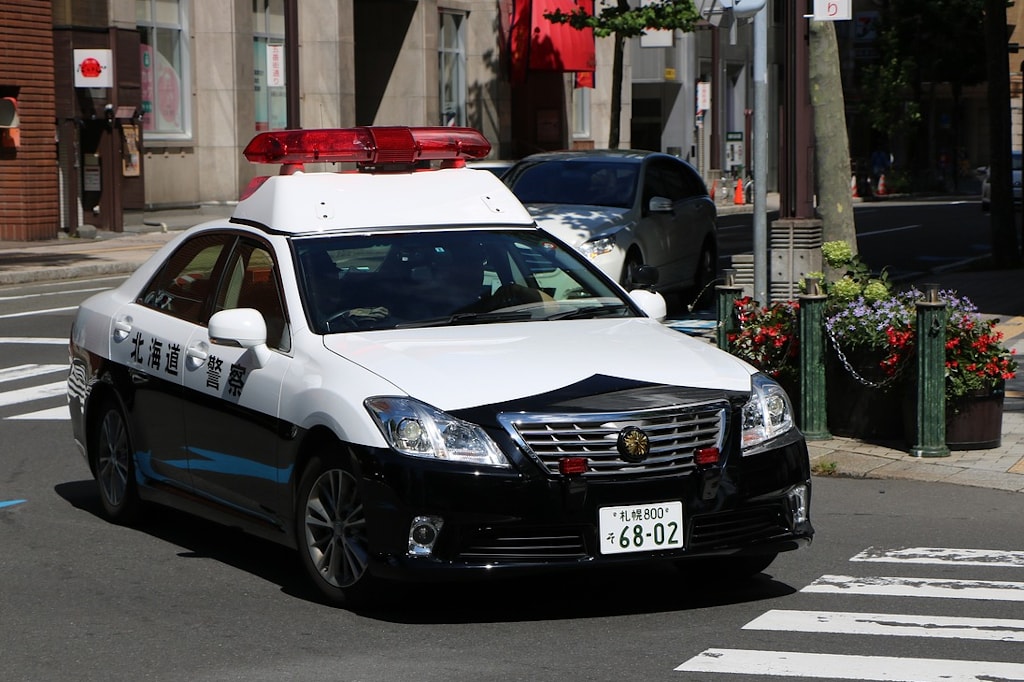
You should report any accident to the police, failure to do so may invalidate your insurance
Visitors to Japan can purchase the necessary insurance for driving in the country through most car rental companies or insurance companies. It is important to note that the insurance must be purchased from a Japanese company and not from your home country.
Visitors may also need to provide proof of their international driver’s licence in order to purchase the necessary insurance.
In the event of an accident, it is essential you report it to the police (call 110) in order for any insurers to process a claim and make payment. Failure to report an accident may invalidate your insurance cover.
Japan Automobile Federation information
The Japan Automobile Federation website has a good basic introduction to driving in Japan for foreigners, that is aimed at those who have little to know speaking or reading Japanese skills.
They have a hub entitled Driving in Japan (https://english.jaf.or.jp/driving-in-japan ) and from there link out to sub-sections covering:
They also sell a guide, Rules of The Road, in eBook and print editions in English, Chinese, Portuguese and Spanish. Copies can be ordered via the Amazon.jp website.
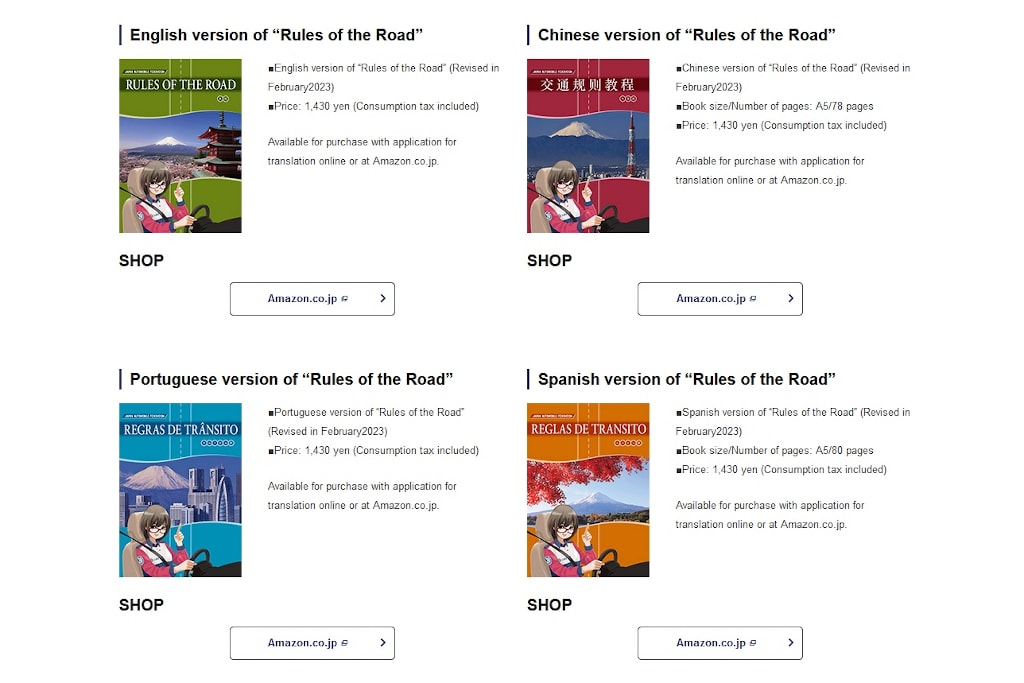
The Japan Automobile Federation guide Rules of The Road is available in English, Chinese, Portuguese and Spanish | Photo: JAF
Their traffic rules in Japan page (https://english.jaf.or.jp/safe-driving/traffic-rules-in-japan ) is a good place to begin your rummage through their site. There's a section on emergency measures, breakdowns, medical assistance, police, insurance, a list of Japanese car rental companies with links, getting your petrol (gas) at filling stations equipped with self-serve pumps.
You'll unearth quite a lot of handy info once you start clicking around. There's also a good number of instruction videos highlighting specific rules and quizzes you can take to test yourself to see how much you've remembered.
Renting a car in Japan
Although the Japan Automobile Federation has a list of Japanese car hire companies, most of the major international hire brands also have a presence in the country. These include Avis, Budget, Enterprise Rent-A-Car, Europcar and Hertz.
However, these companies typically partner with local Japanese car rental companies to deliver their services, and their pricing isn’t always very competitive. The cheaper option will be to use a Japanese car hire company. Most are geared up for international customers and services, including some online booking) are available in English.
Japanese car rental companies to look out for include: Eki ren (also called JR rentacar) , Nippon Rentacar, Nissan Rentacar, Orix Rentacar, Times Car Rental, Toyota Rentacar.
When you rent a car in Japan, a basic level of insurance will already be included in the price.
If you want to upgrade the insurance, you can buy additional cover from where you book the car, from the rental company you use, or from a third-party website.
Car rental in Japan using Booking.com
If you're keen to try car rental in Japan but don't speak or read Japanese, there's an easy way to get this sorted - by using the Booking.com website. Although best known for their hotel and accommodation platform, the site also offers car rental worldwide - including Japan.
Specify your pick-up location, and date and times of your pick-up and drop-off and hit the 'Search' button. (It's also possible to specify a drop-off point different to your pick-up location if you need to.) They'll then go and compare prices across a range of service providers, linking directly with the Japanese car rental companies mentioned above.
The results page tells you how many cars are available that match your search criteria, show the 'Top Pick', pricing, the Japanese car company providing the service, customer ratings, etc. It's also possible to narrow down the search results by applying filters such as location (e.g. a specific airport or train station), price range per day, car specs, car size, electric models etc.
Using GPS to navigate your way around
It’s worth noting that many hire cars will use a Japanese GPS system - which will likely be different to any GPS system you may have used elsewhere. For navigation, you’ll need to enter the address of your destination (most commonly, addresses need to be added in Japanese), or enter in a location code for each of your destinations.
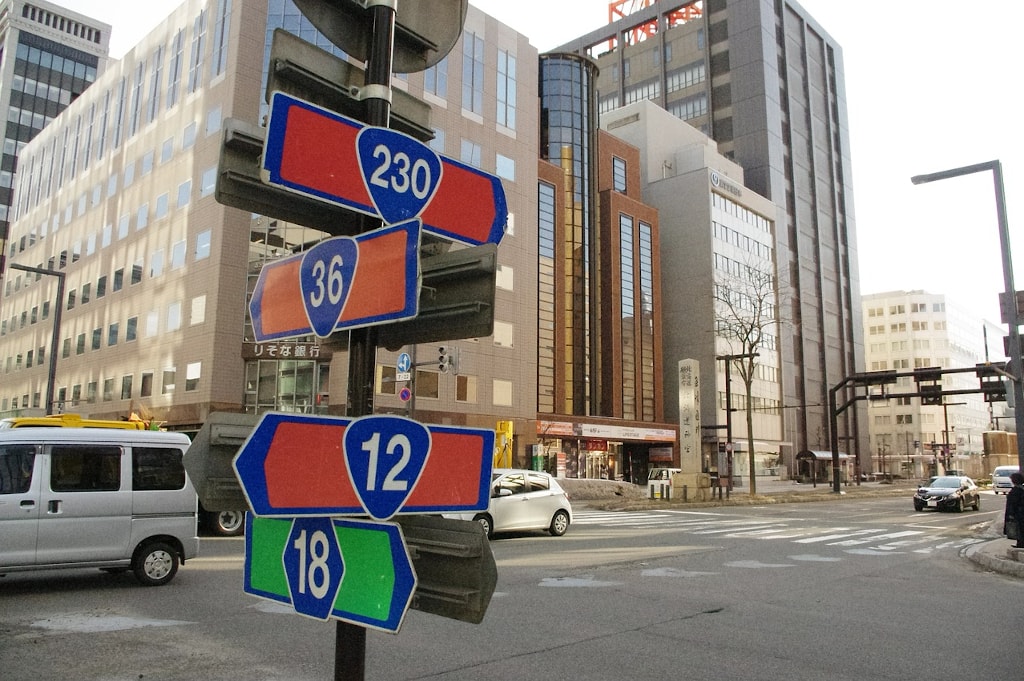
Using in-car GPS systems in Japan can present some challenges, so it's good to plan around them
Location codes are a 6-digit number that is used to identify a specific location in Japan. The first three digits identify the prefecture, while the last three digits identify the exact location within the prefecture. This makes it easier for drivers to quickly and accurately find their destination.
Location codes for use in GPS systems in Japanese rental cars can be obtained from online mapping services such as Google Maps or Yahoo Maps. Users can simply enter the address of their destination and the accompanying location code will be displayed on the map.
Additionally, many GPS navigation systems come with pre-programmed location codes for commonly visited destinations.
Using Google Maps to navigate in Japan
If you can’t read or write Japanese it can be hard to set up your route. If this all sounds or proves too challenging, then you could just use Google Maps instead. Just be aware that, depending on how your device (phone, tablet, laptop) is set up, Google Maps may misread Japanese kanji as Chinese.
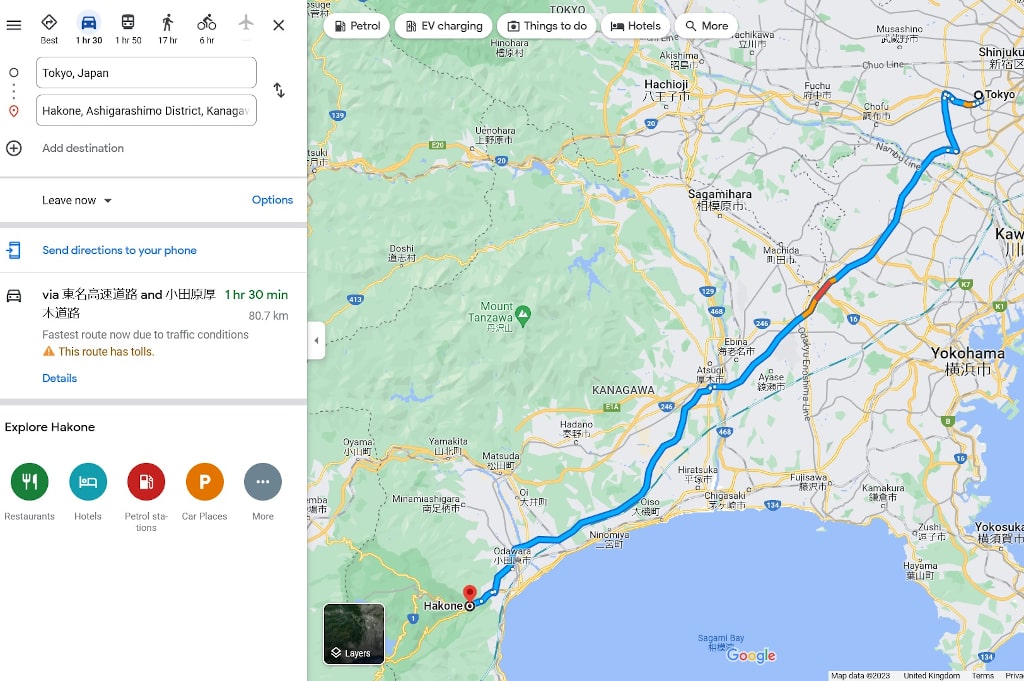
Use services like Google Maps to navigate - just make sure you've got internet access via Wi-Fi or SIM
To access Google Maps you’ll either need to rent pocket Wi-Fi or have a SIM card (or Japan eSIM) data plan that gives you internet access during your trip. Then simply use the Directions and Route planner within Google Maps on your phone. Both the maps and audio directions will be in English, or whatever language you have your phone set to.
If maps are presented with some Japanese characters you cannot read, take a screenshot and then use something like Google Translate to decode them into English. If you’re planning to use your own phone you may want to buy a window mount and long charging/power cable in advance.
The mounts made by iOttie, such as the iOttie Easy One Touch 5 Smartphone Car Mount or the magnetic iOttie iTap 2 Magnetic Dashboard Mount often top independent reviews.
Using and paying for Japanese toll roads
Japan has a system of toll roads. These are expressways that will get you to your destination quicker than using the regular (but free) roads and highways. To use the tolls you need either to pay with a credit card or pay in advance using an ETC card.
Japan’s Electronic Toll Collection (ETC) system
For those taking frequent toll road journeys in Japan, the ETC system is an automatic and quick way to pay. Cars that are equipped with an ETC device and registered ETC card can head toward the purple signs with ETC written on them and pass through quickly and easily, without stopping.
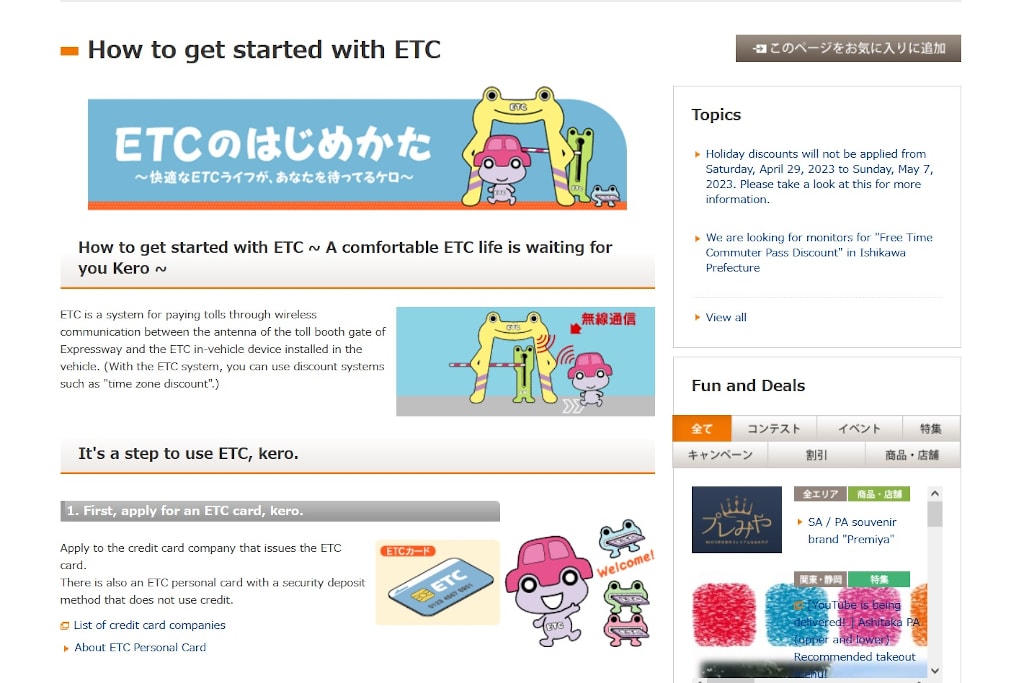
The official Electronic Toll Collection (ETC) website contains helpful step-by-step guides to using the service | Photo: ETC
If you are renting a car in Japan and want to use toll roads, ask the hire company if they can also rent you an ETC card for the duration of your hire. If borrowing an ETC card, all toll charges accumulated during its use must be settled with the rental office when you return the vehicle.
Whichever payment option you choose you should plan in advance and definitely *before* you start using toll roads. Otherwise you might find yourself on a closed toll road with no means for paying to exit it.
Using petrol/gas stations
Using filling stations in Japan for the first time, foreigners may find the payment process to be different than what they are used to. Many stations are payment by cash-only and do not accept credit or debit cards. Additionally, it is important to be aware of the price per litre as petrol/gasoline prices can fluctuate.
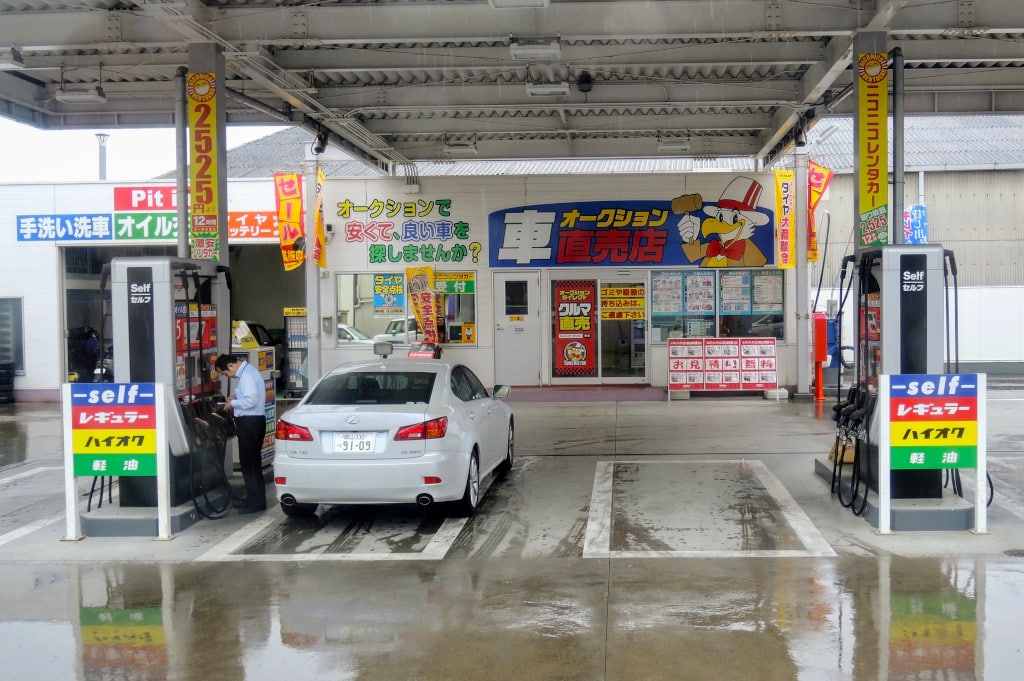
At self-service filling stations you'll need to check for the correct fuel (there are usually clear signs) and fill your tank yourself
There are two types of service: full-service and self-service. Full-service stands typically have an attendant who will fill your car for you and check your oil, while self-service stands are unmanned and require you to 'pump the gas' yourself.
Most petrol stands carry both regular and premium gasoline, as well as diesel fuel. The pumps at the stand will usually have the brand and type of fuel clearly marked. Of course, it is important to ensure that you are selecting the correct type of fuel for your car!
Some filling stations may be closed at night or on certain days so it is important to plan accordingly. It’s a good idea when planning ahead to have at least a couple of options for service stations en route if you think you’ll need to refuel.
VIDEO: Driving in Japan - Kyushu or Okinawa?
In this short clip from one of my Travel Planning Calls I answer the client's question about would it be a good idea to hire a car during their itinerary when they are in the southern islands of Kyushu and Okinawa. There's a little more about my thoughts on this in this short blog post.
Alternatives to driving in Japan
If, having read the above, you're now thinking maybe driving in Japan isn't for you (don't worry, it isn't for most visitors), there's nothing to be concerned about, as you have plenty of other options.
Travelling by train: shinkansen, regional and local services
Japan has one of the best and most comprehensive railway networks anywhere in the world.
Whether you opt for the Japan Rail Pass and use the country's iconic shinkansen bullet trains to span its main islands, or you choose to use Regional Rail Passes or take local trains to get off-the-beaten path (or railway tracks), there's an awful lot of the country you can explore.
Using buses to get to remote areas
To get to those even more remote areas, there are bus services operating throughout Japan, including on some of its smaller islands, and where there are no train services at all (such as on Okinawa). Use a website such as 12Go Asia to research bus timetables and book tickets in advance.
Taking taxis and using them to sightsee
Taxis are not just for airport runs.
It is possible to hire taxis based on time spent with them, rather than distance travelled. Essentially a fixed price for a fixed amount of time. It's a good idea to do to do a bit of research in advance if you can. Far from all taxi drivers will be up for offering such a service. It's often those in more out of the way places, where you'll find this as an option.
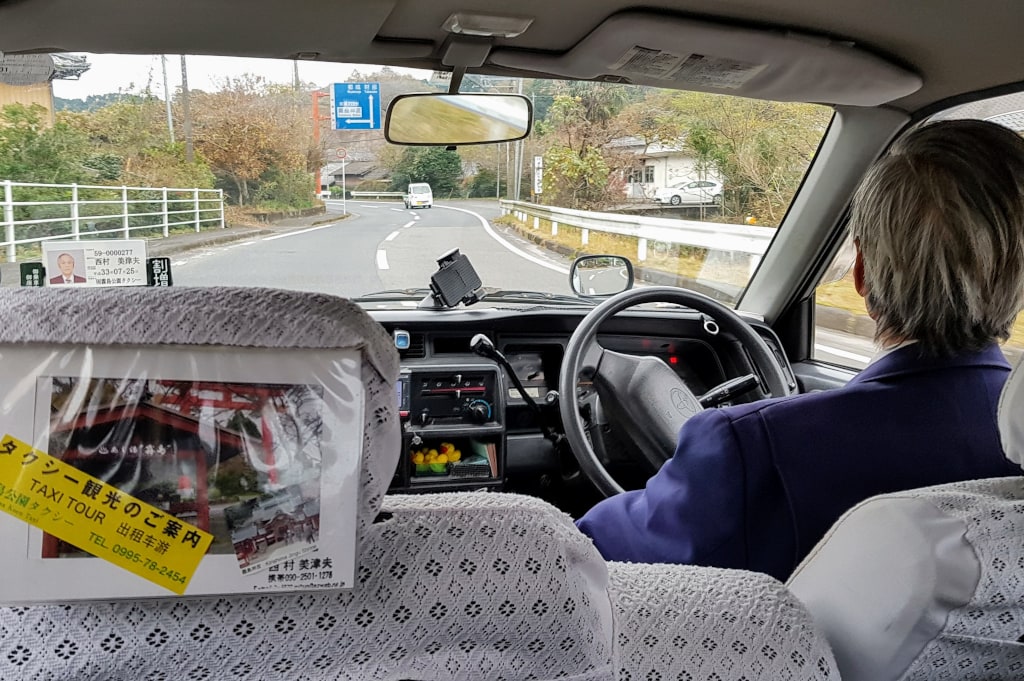
Using taxis as local tour guides is probably the most efficient way to explore remote areas by car
Some, used to driving foreign tourists around their region, will gladly act as local guides and even have prepared, laminated guides to (and well-rehearsed patter for) the most popular sights in their area. Tell them the spots you'd like to see, how much time you have and agree a price up front. If you're lucky, they'll speak some English and won't mind taking a few photos of you too.
My wife and I often do this in remote areas. It is the most efficient way of navigating rural and out of the way spots (and a lot less hassle than trying to navigate and drive yourself). We've several fond memories of drivers who were proud to share their passion for their little part of Japan with us for a few hours.
Flying between big (and small) cities and islands
Probably the least environmentally friendly option, flying inside Japan to get about is another alternative to driving, if your main reason for wanting to drive is to cover the big distances between the major cities or to get from one island to another.
Aside from the major airlines, there are a decent number of low-cost carriers operating inside Japan and a few can get you to some pretty remote regions.
If you're travelling on a tourist visa you'll also have the advantage over the locals by being able to access foreigner-friendly discounted fares via Japan Airlines' Japan Explorer Pass and ANA's Experience Japan Fares.
Conclusion: Should you drive in Japan?
Well, as I said at the start of this beginner's guide to driving in Japan, that final decision can only be yours to make.
There are definitely pros to driving in Japan, such as being able to get to areas not well served (or not at all) by public transport. But then there are certainly cons too. Those multi-level highways are not for the faint of heart, and driving in Japan's congested city centres can require a Zen-like patience.
Whichever route you choose to take, I hope this introduction has made the prospect of driving in Japan easier and maybe helped you decide which solution is best for you.
If you have any experience of driving in Japan, or have any questions, please leave a comment below. I'll do my best to answer them - even though I do not drive. 😉

About the Author
A writer and publisher from England, Rob has been exploring Japan’s 6,800 islands since 2000. He specialises in travelling off the beaten track, whether on remote atolls or in the hidden streets of major cities. He’s the founder of TheRealJapan.com.
Resources
Car Rental in Japan via Booking.com
Cheap car hire, compare deals, models and more
International Driving Permit Website
https://internationaldrivingpermit.org
Renting Cars in Japan (JNTO)
https://www.japan.travel/en/plan/getting-around/cars/
Central Nippon Expressway Company Limited: ETC & Discounts
https://www.c-nexco.co.jp/en/etc/
WebRentacar Website
https://www.web-rentacar.com/en/helpful/etc
More Planning Resources
My List of Recommended Japan Travel Resources
Further Related Reading
Essential Japan Travel Tips for First Time Visitors
My Guides To Travelling In Japan
If you enjoyed this article please share this image online:

